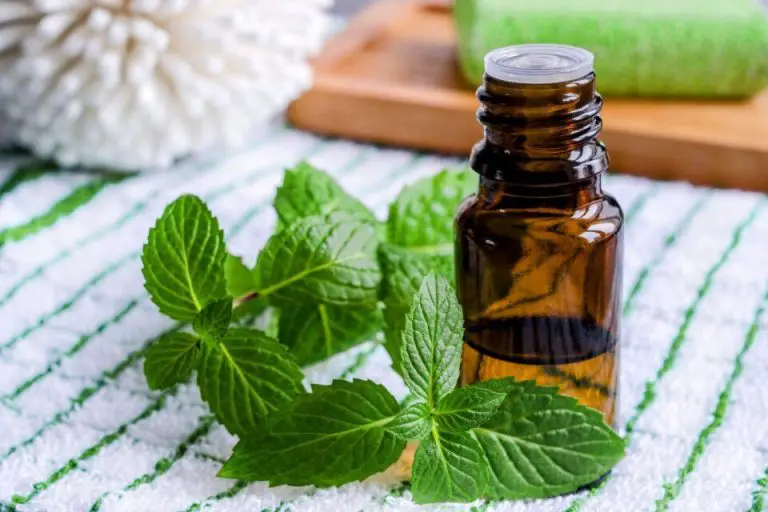What Can I Put In Wax Warmer To Smell Good?
Wax warmers, also known as wax melters, are devices that use heat to melt scented wax or wax melts to fill a room with fragrance. They typically consist of a small dish designed to hold the wax, and a heat source beneath it to warm and melt the wax.
The scented wax is placed in the dish atop the device, which uses a low-wattage light bulb or hot plate to warm it. As it melts, the scent is released into the air through oils contained in the wax. The device continuously melts and releases the fragrance over time without the need to light a fire or contain an open flame.
Wax warmers have become increasingly popular in home decor due to their safety, convenience and affordability compared to candles. They allow people to fragrance their homes without the risks associated with burning an open flame. People also enjoy being able to easily change scents by simply switching out the wax. Most warmers use a light bulb that only uses a minimal amount of electricity, making them a budget-friendly way to fill any space with inviting scents.
Scented Wax for Warmers
Scented wax is one of the most popular options for wax warmers. There are a few different types of scented wax you can use:
Soy Wax – This natural wax is made from soybeans. It’s a renewable and environmentally friendly option. Soy wax has a lower melting point than paraffin, so the scentThrow’s more quickly. It also holds scent well over time. Soy wax can be found at craft stores, online, and some big box stores.
Paraffin Wax – Paraffin wax is a petroleum-based wax made from crude oil. It’s commonly used in candle making and wax melting because it’s affordable and easy to work with. The downside is that paraffin doesn’t hold scent as well as natural waxes. Paraffin wax can be found at most craft and big box stores.
Beeswax – Beeswax is a natural wax made by honey bees. It has a pleasant, sweet scent on its own. Beeswax has excellent scent throw properties and helps anchor scents. The downside is beeswax can be more expensive and challenging to work with. You’ll find beeswax at craft stores or beekeeping suppliers.
When buying scented wax, look for quality fragrances and clean-burning wax. Watch out for additives like dyes and synthetic fragrances which can alter scent throw. It’s largely a matter of personal preference whether you choose a natural or synthetic wax base for your wax warmer.
Essential Oils
Essential oils are extremely popular to use in wax warmers because they provide natural fragrance as well as potential health benefits. When heated, essential oils will diffuse into the air to create an aromatherapy effect. The scent and therapeutic properties get released and distributed around the room.
Some of the most popular essential oils to use in wax warmers include lavender, lemon, peppermint, eucalyptus, tea tree, rosemary, chamomile, jasmine, and orange. Lavender is extremely versatile – it has a fresh floral scent and is known for its relaxing and stress-relieving properties. Lemon oil provides an uplifting citrus aroma and can also help purify the air. Peppermint has a strong minty scent that can improve focus and concentration.
When using essential oils in wax warmers, only a few drops are needed at a time. Start with 3-5 drops in the wax warmer dish and adjust as needed. Monitor the scent – more drops can be added for a stronger aroma, but avoid overpowering the room. The goal is a subtle, pleasant fragrance. Also make sure to use 100% pure essential oils, not synthetic fragrance oils. High quality essential oils will provide the best results.
Dried Flowers and Herbs
Dried flowers and herbs are a great natural way to add lovely scents to your wax warmer. Some popular dried flowers to use include:
- Lavender – Lavender has a light floral and herbaceous scent that is calming. The dried flowers look beautiful too.
- Roses – Rose petals retain their sweet floral perfume when dried. Red roses have the strongest scent.
- Jasmine – These tropical flowers have an exotic, rich floral fragrance when dried.
- Chamomile – The daisy-like flowers emit a mild fruity, herbaceous aroma.
Dried culinary herbs also bring nice scents:
- Rosemary – This Mediterranean herb has a fresh, pine-like scent.
- Mint – Spearmint and peppermint have cooling, bright aromas.
- Basil – The sweet herbaceous scent of basil is perfect for kitchens.
- Thyme – Earthy, herbal thyme has cozy aromatic qualities.
To use, place a tablespoon or two of dried flowers or herbs into the wax warmer. Let the heat slowly release the natural fragrances into the air. Be sure to stir occasionally to prevent burning.
Fruits and Spices
Filling your wax warmer with fruits and spices is a natural way to fill your home with inviting scents. The aromatic oils in citrus peels, cinnamon sticks, cloves, star anise, and other fruits and spices are released when heated in a wax warmer.
Some popular options include:
- Citrus peels – Orange, lemon, grapefruit, lime, and other citrus peels contain fragrant essential oils that scent the air when warmed. Peels can be used fresh or dried.
- Cinnamon sticks – Cinnamon infuses the air with its warm, spicy aroma when placed in a wax warmer. Sticks can be broken into smaller pieces to release more fragrance.
- Cloves – The potent, spicy-sweet smell of cloves fills a room when put in a wax warmer. Use whole cloves or ground cloves.
- Star anise – With its licorice-like fragrance, star anise adds a unique scent to a wax warmer. Use whole pods or pieces.
- Other spices – Allspice, cardamom, nutmeg, and ginger also work well in wax warmers.
When using fruits and spices, place a small amount into the wax warmer, checking frequently and adding more as needed. Avoid overfilling to prevent overflow or burning. Enjoy the natural aromas!
Wooden Reeds
Wooden reeds are a simple yet effective way to add lovely scents to your wax warmer. The reeds absorb and disperse the fragrant essential oils, releasing the aroma into the air. Here’s how they work and how to use them safely:
Wooden reeds are made of natural, porous wood that soaks up and diffuses the essential oils. Popular types of wood include bamboo, rattan, and wood. The oils diffuse into the air passively without heat or electricity. Simply add a few drops of essential oil onto the reed and place it into your wax warmer receptacle or next to the warmer. As the reed rests in the wax or oil, it will slowly and continuously emit the scent.
Look for reeds in craft stores, home goods stores, or online in a variety of sizes and wood types. Make sure to get reeds specifically designed for essential oils and aromatherapy use. The reeds also come in different shapes like stars, hearts, circles, and more.
When using reeds, carefully read the instructions and follow safety precautions. Only add a few drops of oil at a time, as too much can overwhelm the room or make the reed drip. Rotate the reeds every few weeks once the scent fades. Use mild oils that do not stain or irritate skin. Never ingest essential oils. Keep reeds out of reach of children and pets. Allow proper ventilation in the room.
With these simple tips, wooden reeds can provide a safe, stylish, and mess-free way to enjoy lovely scents from your wax warmer.
Wax Melts
Wax melts are scented wax cubes or bars created specifically for melting in wax warmers. They are made of soy wax, paraffin wax, or a blend and infused with concentrated fragrance oils. Wax melts slowly melt when heated in the wax warmer, releasing fragrance into the air. They come in an endless variety of scents like floral, bakery, fruity, holiday, clean cotton, and more.
Some popular wax melt scents include:
- Lavender or eucalyptus for relaxation
- Apple cinnamon or pumpkin spice for cozy fall smells
- Fresh cotton or linen for clean, fresh scents
- Vanilla, sugar cookie or cupcake for sweet bakery smells
- Fruity scents like strawberry, peach, mango, etc.
Wax melts can be purchased at craft stores, online retailers like Etsy, or even big box stores like Walmart and Target. Major wax melt brands include Scentsy, Yankee Candle, Walmart Better Homes & Gardens, and Kringle Candle.
Fragrance Oils
Fragrance oils are an excellent choice to scent your wax warmer. They are blended synthetic oils designed to duplicate natural fragrances like fruits, flowers, spices and more. Fragrance oils have many benefits when used in wax warmers:
– Long-lasting scent – Fragrance oils will fill a room with aroma for hours on end when heated in a wax warmer.
– Affordable – They are an economical way to scent your home compared to essential oils or candles.
– Variety – Fragrance oils come in a huge range of scents from fruity notes like apple and watermelon to bakery aromas like vanilla and cinnamon. Popular fragrances include lavender, citrus, clean cotton, and fresh linen.
– Safe – High quality fragrance oils are formulated to be safe for use in wax warmers. Always check for any skin sensitivities before use.
– Easy to use – Simply add a few drops of fragrance oil directly into the melted wax in your warmer. Stir to combine and scent your space.
Safety Tips for Using Wax Warmers
When using wax warmers, it’s important to follow some basic safety guidelines to avoid any accidents or injuries.
First and foremost, wax warmers can get extremely hot. The wax itself can reach temps over 180°F. Always place your wax warmer on a stable, heat-resistant surface away from anything flammable. Never leave a wax warmer unattended or sleep with one running overnight.
Be very cautious having wax warmers around children and pets. The high temperatures pose a serious burn risk if they were to accidentally knock the warmer over. Keep your warmer up high, out of reach from kids and pets.
Only use your wax warmer as intended by the manufacturer. Do not overload it with wax or use higher watt lightbulbs than recommended. This can lead to overheating and potential fires.
Allow your wax warmer to fully cool before handling it or refilling with wax. The wax itself takes time to harden and can remain hot long after turning off the warmer.
By following these basic safety tips, you can safely enjoy beautiful scents from your wax warmer for years to come!
Conclusion
In summary, there are many great options for adding wonderful scents to your wax warmer. Some of the best choices include scented wax melts, essential oils, dried flowers and herbs, wood reeds, and fragrance oils. Scented wax melts come in a huge variety of fragrances and are designed specifically for use in wax warmers. Just place a cube in the melter and let it fill the air with a lovely aroma. Essential oils can also be added to unscented wax to create custom scents that are natural and pure. Dried flowers and herbs like lavender, rose, and mint add a delicate natural perfume to your space. Wood reeds are another easy way to infuse your warmer with forest-inspired scents like pine or cedar. Fragrance oils are concentrated and allow you to add just a few drops for potent, long-lasting fragrance.
Some tips for getting the most enjoyment from your wax warmer include alternating scents frequently to keep things interesting. Pay attention to scent combinations and avoid mixing too many competing fragrances. Move your warmer to different rooms during the day to spread the scent around your home. And always take safety precautions by keeping warmers out of reach of children and pets. With so many options for scenting your wax warmer, you can fill your home with amazing aromas!






